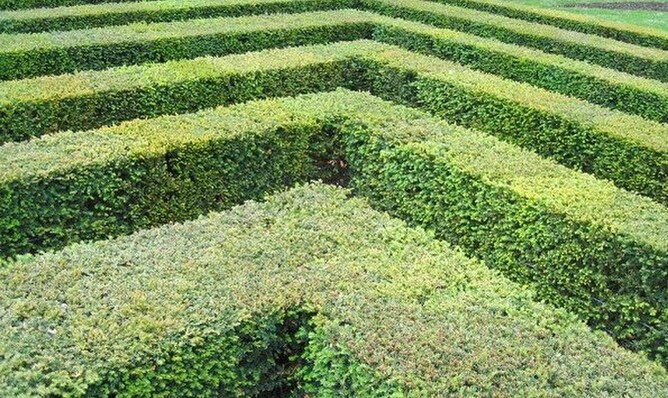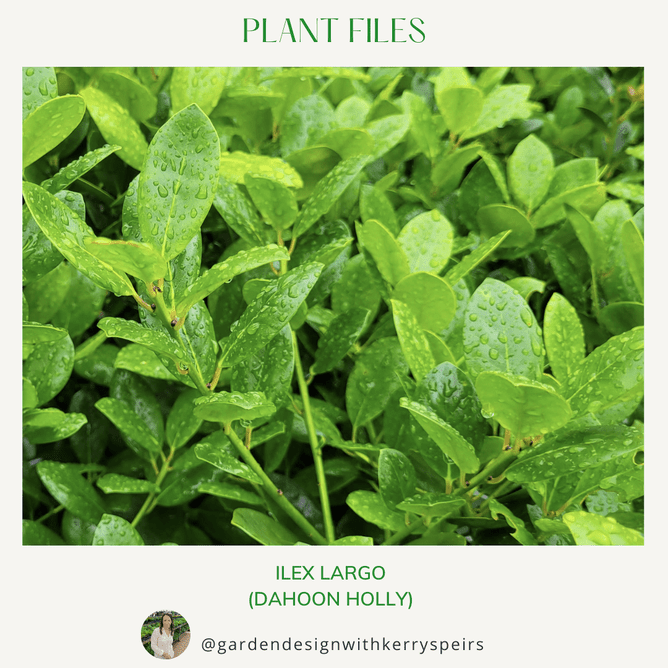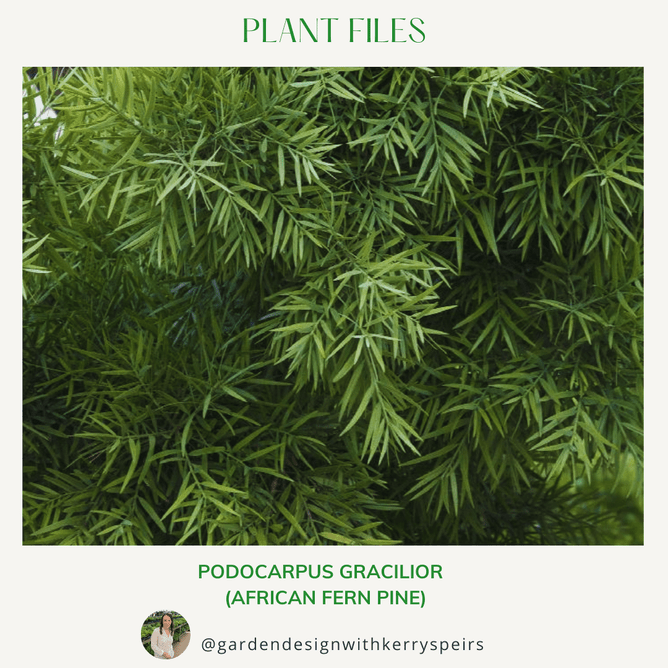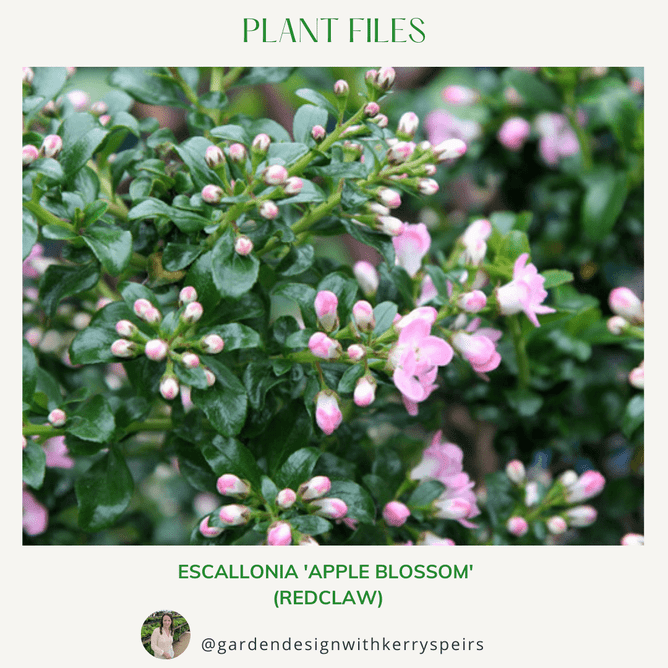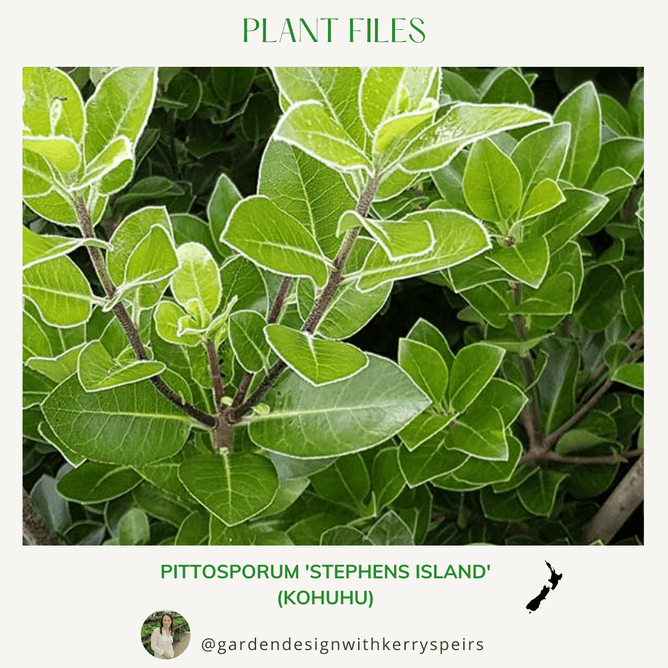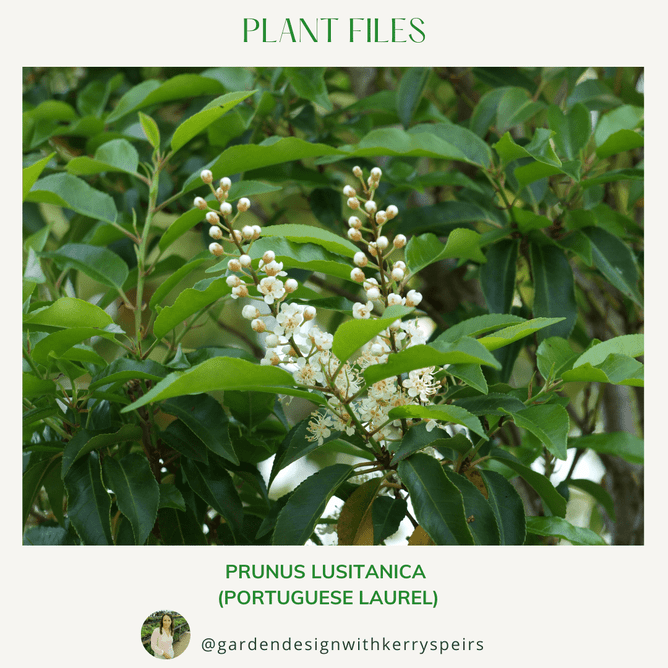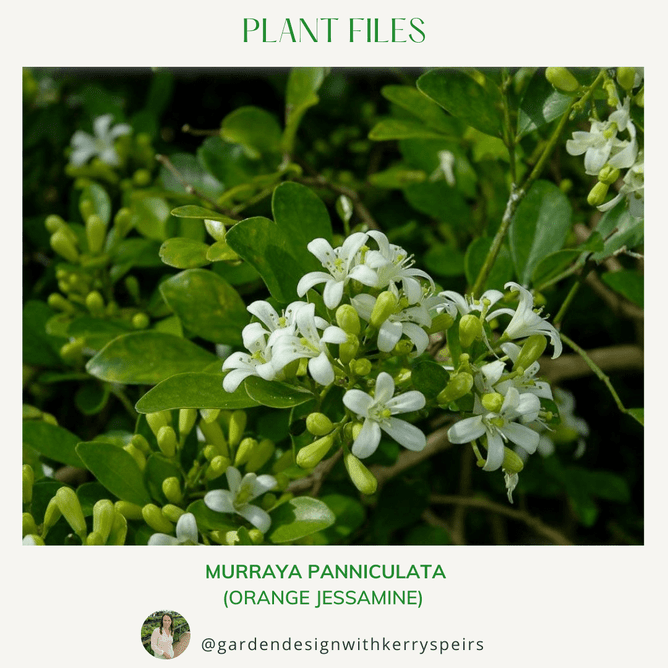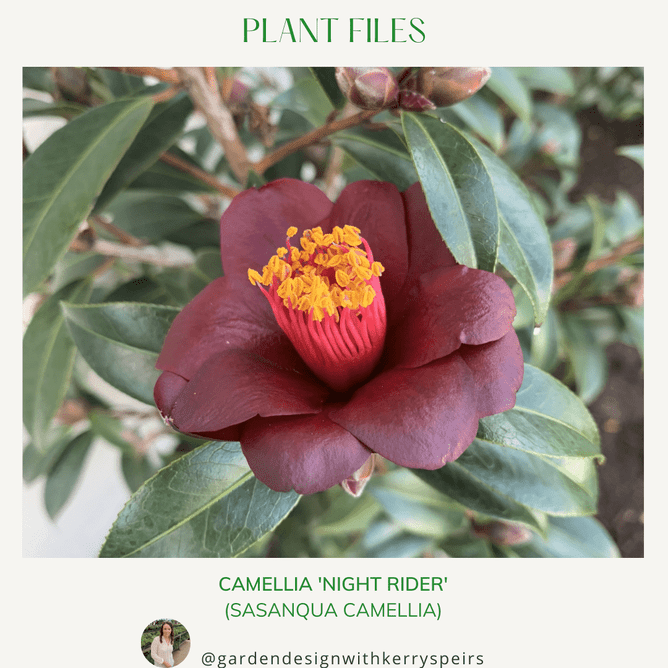A Landscape Designers' Perspective on 6 Best Hedge Plants
From a landscape designer's perspective, the best hedge plants for NZ gardens are those that will meet the needs of the client and best serve the purpose for which they are being planted, be that adding structure to the landscape, providing fast and effective screening of an ugly eyesore or creating privacy for your overlooked garden.
This means the most appropriate hedge plant options will vary from project to project, making it almost impossible to choose just 6 of the best.
We'll talk about specific plants at the end of this blog, but first, let's talk about what characteristics you should look for in a hedge plant, and which you should avoid.
You can also find a lot more detailed information on choosing and using screening hedges, including additional plant selections, in our 'Neighbour Be Gone' eBook
BEST HEDGES – WHAT LANDSCAPE DESIGNERS LOOK FOR…
Growth Rate. It's understandable to want a quick fix when planting a privacy hedge or screen, however, the best hedge plants are often moderate growers.
Good advice I give to my landscape design clients is to think long-term when it comes to hedges.
Tempting as it is to select a fast-growing hedge species such as Syzygium (aka Eugenia ventenatii or Lilypily) when you are desperate to quickly screen out pesky neighbours or a neighbouring eyesore that is marring the beauty of your landscape, consider the long-term maintenance implications.
Your leafy screen may quickly soar to the often desired 2.5m metres high; however, it won't then stop. Regular trimming will be needed, and you may soon find yourself a slave to the hedge trimmers, as that Syzygium (aka Eugenia ventenatii /Lilypily hedge may need pruning 2-3 times a year!
Garden help can be outsourced, but a hedge over three metres is a tricky beast to manage and may be classed as 'trees' by your landscaper or gardener, triggering extra health and safety measures / additional expense to keep it to the desired height.
A moderate grower, while slower to establish, will prove less demanding in the long run.
Suitability. The best hedges are also happy hedges. Good landscape designers always select hedge plants from species that will thrive, or at the very least tolerate, the growing conditions on-site. If you know what to look for, plants give visual clues as to their environmental or situation tolerances. For example:
The most suitable hedges for coastal sites will often have what looks like a furry coating on the underside of the leaves. These fine hairs are known as tomentosum and they often give the foliage a silvery look. Tomentosum provides foliage with a layer of protection from salt-laden winds.
So, you can tell the best hedges for full sun or arid landscape situations, as they also typically have silvery, green foliage (think Olives & Corokia). This can be a waxy silver coating which helps reflect intense sun or that thicker silver 'fuzz' to help with drought as the silver fuzz ( that's right - tomentosum) catches rainfall and moistens the plant's cells.
Thick, shiny leaves are another visual clue that a hedge plant is suited to dry or windy conditions. Plants with shiny leaves have a waxy coating. This gives protection against certain environmental factors (such as salt and wind) by creating a barrier, and can help the plant retain moisture in hot environments as the coatings can help deflect the rays of the sun, stopping the plant from transpiring too quickly. That’s why these thick leaves are also often moisture-filled.
The best hedges for shade are often those with large leaves which can trap light energy for photosynthesis in a place where light levels are low, such as below trees or on the shadier side of the house.
Foliage size. Another thing landscape designers consider while determining the best hedge plants for a landscape project is foliage size. Especially if a low-maintenance hedge is required. A quick whizz over with the electric or battery hedge trimmers doesn't take too long, but unless you don't mind the look of slightly gnawed edges, anything with a largish leaf such as the popular NZ native Psedopanax 'Cyril Watson' (Fivefinger) really needs to be hand pruned or at the very least tip pruned with secateurs.
Aesthetics. The best hedges also look fantastic. Landscape designers all have their favourites, and I'm a big fan of trusty old Camellias for hedging; large-leaved japonicas for shade and dry, and the brighter green sasanquas for sunnier spots. Both types have flossy foliage, gorgeous flowers and a dense, thick habit that's not too demanding on the labour front. Of course, I'm not the only designer who thinks Camellias makes one of the best hedges, so if this is already done to death on your street and you want something different for your landscape, then here are my designer picks of other less common options for you to consider.
THIS LANDSCAPE DESIGNERS BEST 6 HEDGES - scroll to end for images...
Ilex largo (Dahoon Holly)
This is a reasonably recent addition to my go-to list and has quickly become one of my favourites. Yes, it's a holly, but unlike most holly (Ilex), the leaves are oval and smooth. This makes a tremendous glossy evergreen hedge. It has a moderate growth habit and is suitable for full sun or shady garden situations. Drought tolerant and tolerant of exposed and coastal conditions. It appears to be both hardy and also able to cope with humidity, making it suitable for most New Zealand regions.
Podocarpus gracilior (African fern pine)
If glossy leaves aren't your thing or you are looking for a foliage contrast, African fern pine is a little different from its leafier hedge friends. It has long narrow leaves and is a cunning choice for those who a little erratic with pruning, as it looks just as good with a bit of shaggy growth as it does when hard pruned. Full sun, part sun and tolerant of dry conditions and suitable for clay, loam or sandy soils, it is an adaptable option.
Escallonia
Happy in a range of garden situations, including clay soils, and ranging in height from 1-2m up to 4m+ why Escallonias are not used more for hedging bewilders me. Thick glossy foliage, coastal and salt tolerant and tolerant of dry conditions. Add in a smattering of pretty little flowers in white, pink or red from spring through summer depending on the cultivar. What's not to like?
Pittosporum (Stephens Island)
As a landscape designer I've done numerous garden consultations and I've lost count of the number of scraggly pittosporum hedges I've seen. A shame really as it gives this lovely native plant family a bad rep, when really they are just better suited to being grown as fulsome shrubs. However Pittosporum' Stephens Island' is an exception and has some great attributes for those looking for a New Zealand native hedge. It's a compact, hardy, evergreen shrub with attractive deep, dark-green foliage and a moderate growth habit. Clipped it makes a great dense hedge and being from Stephen's Island in the middle of the Cook Strait it's good for coastal conditions.
Prunus lusitanica (Portuguese laurel).
This is a beautiful, dense evergreen shrub that can be hedged to any height. It is easy to maintain and always looks neat and tidy. Needs pruning once a year. Leaves are dark, glossy green with red young shoots that contrast well against the dark green leaves. It has small white, fragrant flowers on longer slender racemes (stems with masses of flowers along their length) in late spring followed by black berries which the birds love. Great for formal gardens it is suitable for full sun, part shade and is hardy to frosts. Best in moist but well drained soil.
Murraya panniculata (Orange Jessamine)
Hands down my current favourite of my best hedges short list, which is why I've left it till last. These often look a little under whelming at the garden centre however they have a lot to offer. They are from the citrus family so expect to enjoy the same sweet-scented blooms from this evergreen shrub. It flowers intermittently throughout the year so is a great choice for entertaining areas, entrances etc. Very flexible size wise, it can be keep narrow and as low as 600mm high or give it more space and time and it can reach 2m+. Salt winds, no problem but it does need protection from frost. Ideal for warm, sunny well drained areas.
WANT TO SEE MORE PLANT OPTIONS BEFORE
YOU DECIDE ON YOUR HEDGE?
There are more hedge plants, and a range of other screening plant options waiting to be discovered in our info-packed hedges and screening plants guide 'Neighbour Be Gone'.
And if you're feeling more knowledgeable about hedge plants after reading this blog, just imagine the extra tips and tricks you could pick up in the guide, along with 35 excellent screening plant options forthe NZ garden.
It's a must-read if you want to improve your garden privacy. GET IT HERE

